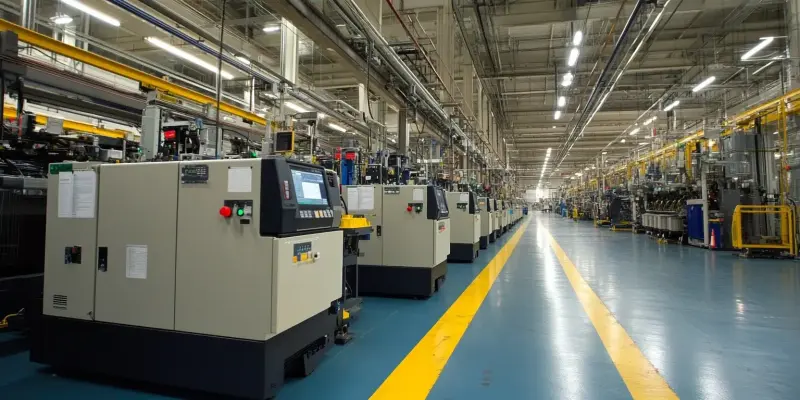Efficient manufacturing processes are the backbone of any successful production operation, and Microsoft Dynamics 365 Business Central offers an effective platform to manage these processes. Whether dealing with process or discrete manufacturing, handling production orders efficiently is crucial to maintaining streamlined operations. Microsoft Dynamics 365 Business Central provides a comprehensive set of tools designed to help manufacturers produce, schedule, and execute production orders effectively. This article delves into the critical steps of processing production orders in Business Central and how it can optimize manufacturing operations.
1. Understanding Production Orders
A production order in Business Central serves as a blueprint for manufacturing a product. It encapsulates crucial information, such as the product to be produced, the raw materials required, the routing process, and the scheduled completion date. By leveraging production orders, manufacturers can manage workflows, control costs, and ensure that timelines are adhered to meticulously. Structured production orders assist in reducing inefficiencies and errors that may arise in the absence of a systematic approach to manufacturing.
2. Types of Production Orders
Business Central supports various types of production orders, each catering to specific stages and needs of the manufacturing process:
Planned Production Orders are used for initial planning and can be adjusted as necessary before execution. Firm Planned Production Orders are somewhat more formal, yet they are still not final and can be adapted. Released Production Orders are considered final and are ready to be acted upon in the manufacturing process. Lastly, Finished Production Orders indicate that the manufacturing process is complete, and the product is ready for sale or inventory. Understanding these different types of orders is essential for manufacturers to maintain an organized and efficient production line.
3. Production Order Processing Steps
Production Order Creation
Creating a production order is the first step in the process. Manufacturers need to navigate to the Production Orders section in Business Central, select the appropriate type of order, and fill in details such as item specifics, quantity, and due date. It is also crucial to specify routing and bill of materials (BOM) to ensure a seamless production process. This step lays the groundwork for subsequent production activities by defining what needs to be done and when.
Scheduling and Capacity Planning
Once a production order is created, the next steps involve scheduling and capacity planning. Manufacturers must assign work centers or machine centers where production activities will take place. It is also essential to adjust the start and end dates based on resource availability to avoid bottlenecks. Material Requirements Planning (MRP) is an invaluable tool at this stage, as it helps check inventory levels and ensures that all necessary components are available, thus preventing delays.
4. Component Reservation and Issuing
Reserving and Issuing Components
The next critical step is the reservation and issuing of components. Manufacturers should use Item Tracking to reserve the necessary raw materials needed for production. By allocating production materials through the Consumption Journal, manufacturers can ensure that the right quantities are available at the right time, minimizing disruptions in the production workflow. This process helps streamline the supply chain and ensures that production moves smoothly without any supply hiccups.
Monitoring and Processing the Production Order
Once components are reserved and issues are logged, the production order can be released, and production can commence. It’s important to keep a close eye on labor and machine usage through the Production Journal. Manufacturers can monitor real-time progress and make necessary adjustments to maintain the flow. By continuously tracking production activities, companies can quickly identify and resolve issues, ensuring that production remains on schedule.
5. Finalizing and Post-Production Tracking
Posting Output and Completing Orders
After the production is complete, the next step involves posting the output. Manufacturers must post completed goods in the Output Journal, marking the end of the production process. The goods are then moved to inventory, where they are ready for sale or further processing. Analyzing variances between actual and planned expenses is an essential post-production activity, enabling manufacturers to understand cost discrepancies and improve future budgeting and planning.
Tracking and Performance Analysis
The final phase involves tracking the overall performance and efficiency of the production process. Manufacturers should regularly check for bottlenecks using production reports and optimize capacity planning via the Capacity Load Overview. Continuous analysis helps in understanding the effectiveness of the production process and making necessary adjustments for future orders. This performance tracking is essential for long-term improvements and maintaining a competitive edge in the market.
Benefits of Production Order Processing in Business Central
Utilizing Business Central for production order processing provides several benefits. Increased efficiency is one of the most notable advantages, as the system automates various production activities, reducing the need for human intervention. Real-time inventory management allows manufacturers to monitor raw materials and finished goods accurately, leading to better stock control. Detailed cost analysis helps in making informed decisions regarding production expenditures, ultimately improving cost management. The system’s scalability ensures that it can grow with the business, supporting increased production volumes without compromising efficiency.
Summary of the Key Takeaways
Efficient manufacturing processes are essential for the success of any production operation. Microsoft Dynamics 365 Business Central offers a robust platform to manage these crucial processes, whether they involve process or discrete manufacturing. Handling production orders efficiently is key to maintaining streamlined operations, and Dynamics 365 Business Central provides an extensive suite of tools designed to help manufacturers create, schedule, and execute production orders with ease.
This article explores the pivotal steps involved in managing production orders using Business Central and demonstrates how the system can enhance manufacturing operations. The software supports the entire production lifecycle from planning to completion, ensuring that every aspect of the process is optimized. By employing Microsoft Dynamics 365 Business Central, companies can ensure better resource management, timely production runs, and reduced downtime. Implementing such a comprehensive solution helps organizations stay competitive in today’s fast-paced manufacturing environment, ultimately leading to improved productivity and profitability.

